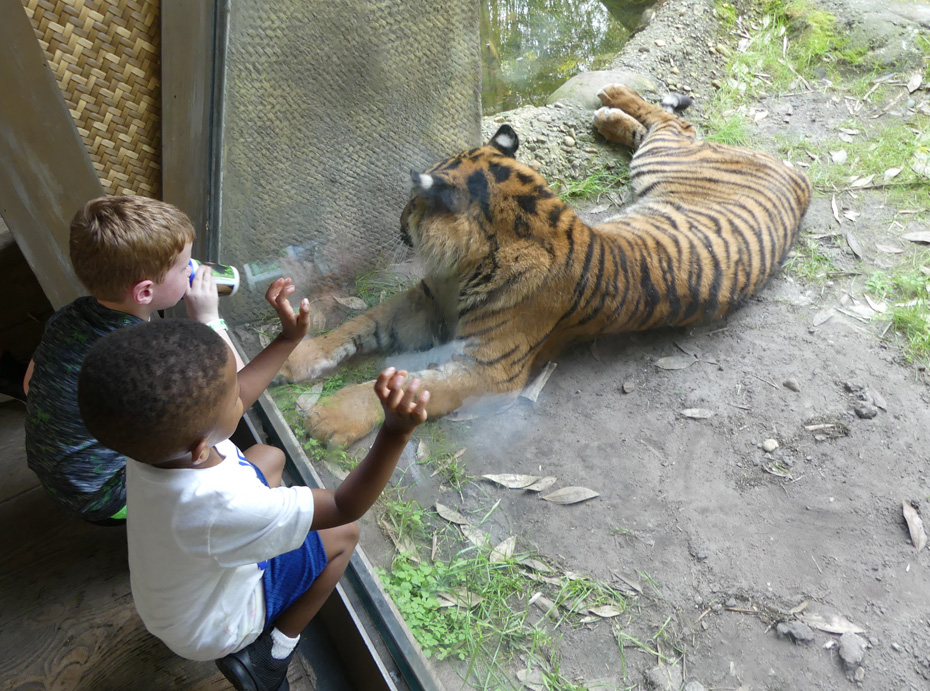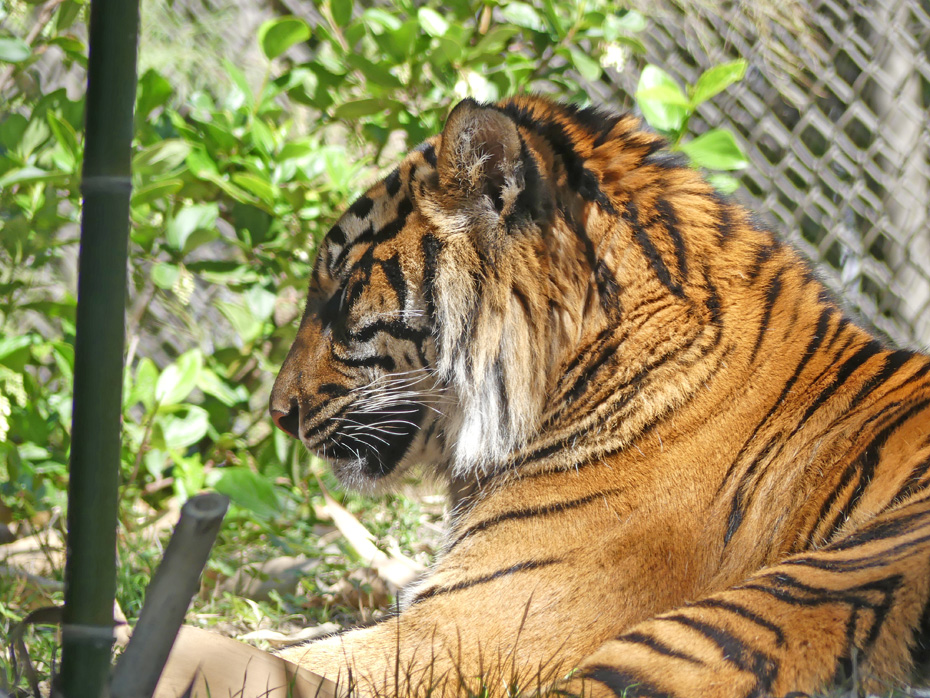
|
|
|
|
|
|
|
|
|
|
There are some places in Jacksonville
a visitor should not miss. One of them is Jacksonville Zoo and
Botanical Gardens. It's on the north side of Jacksonville and
not in the main path of visitors headed into Jax's busy
downtown. It began back in 1914 and has grown
ever since. The 120-acre preserve offers some wonderful animal
viewing whether for families wanting to educate children about
wildlife or grownups wanting to know more about other
creatures with whom we share out planet.
There are no cramped cages with
miserable animals pacing. You'll find spacious natural
habitats where animals enjoy a life in conditions that closely
resemble their native habitats. You can explore Australia,
Africa, South America, Wild Florida or the Great Apes. For
younger guests who need a break, you can visit the Play Park.
But the big cats are my favorite.
One of the best ways to get more out
of your visit is to attend the Keeper Talks. You can ask
questions and get up close and personal with the zoo's
inhabitants.
Each area represents wildlife from one
area or continent and is arranged off a central loop. You
can't get lost here. So get in the loop and "zoo" it right.
Below are just a sample of some of the big cats you will find
at Jacksonville Zoo and Botanical Gardens. Jaguar
|
Connect with us on:
American Roads
and | ||
|
Public Disclosure--
Please Read The FTC has a law requiring web sites to let their readers know if any of the stories are "sponsored" or compensated. We also are to let readers know if any of our links are ads. Most are not. They are just a way to direct you to more information about the article where the link is placed. We also have several ads on our pages. They are clearly marked as ads. I think readers are smart enough to know an ad when they see one but to obey the letter of the law, I am putting this statement here to make sure everyone understands. American Roads and Global Highways may contain affiliate links or ads. Further, as their bios show, most of the feature writers are professional travel writers. As such we are frequently invited on press trips, also called fam trips. On these trips most of our lodging, dining, admissions fees and often plane fare are covered by the city or firm hosting the trip. It is an opportunity to visit places we might not otherwise be able to visit. However, no one tells us what to write about those places. All opinions are 100% those of the author of that feature column. . |
|||
|
Privacy Policy/ Archives /
Contributors /
Subscribe to
American Roads Books by
Kathleen Walls /
Contact /
Sponsor or Advertise/ American Roads & Global Highways Home Page
|


















